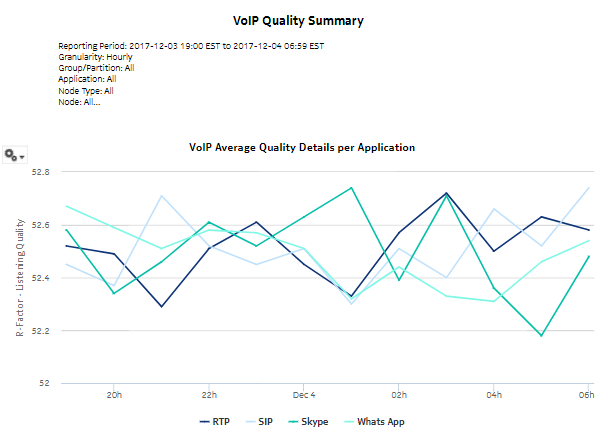|
Statistics type |
AA Cflowd RTP voice performance application |
|
NSP Flow Collector required |
Yes |
|
Domains |
Residential / Wi-Fi (ESM)
Mobile
Wi-Fi (DSM)
Business |
|
Report inputs |
Prompt |
Notes |
|
End date |
Calendar date or relative date (for example, two days ago) and time |
|
Granularity |
Aggregation types:
|
|
Report range |
Length of time to be reported, in minutes (minutes, min), hours (hours, h), days (days, d), weeks (w), or months (months, m) |
|
Node Type |
Search using partial names or wildcard (%).
Select individual items or click Select All. |
|
Node |
|
Group/Partition |
|
Application |
|
Select metric to plot |
R-Factor - listening quality, MOS - conversational quality, MOS - listening quality, MOS - nominal, MOS - reference, R-Factor - conversational quality |
|
Select metrics to see the details summary |
Degradation factor due to:
-
codec type
-
delay
-
echo
-
noise level
-
packet discard
-
packet loss
-
recency
-
signal level |
MOS:
-
conversational quality
-
listening quality
-
nominal |
R-factor:
-
conversational quality
-
listening quality |
|
Drill-down support |
No |

